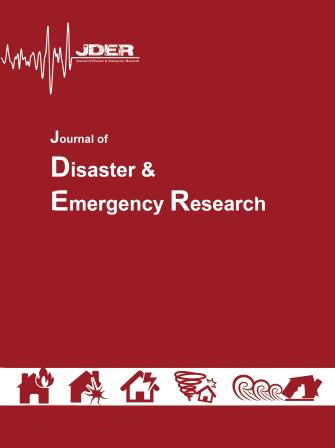Terrorist Shooting to Responders’ Cars in Tehran Terrorist Attack in 2017: A Case Report
Ahad Heydari
Department of health, safety & environment, Tehran University, Tehran, Iran
| ARTICLE INFO |
| CASE REPORT Article history: Received: 23 Des 2017 Revised: 7 Jan 2018 Accepted: 10 Feb 2018 |
| * Corresponding Author: Ahad heydari Address: No.23, Azin Alley, Qods Ave., Enghelab St .Graduate Faculty of Environment, University of Tehran, Tehran, Iran Email: heydariahad@gmail.com |
Introduction
| T |
in order to reach their security, peace, and routines.(1)
Given that it is a common issue for all nations, emergency responders life has changed in fundamental ways since September11, 2001. Members of this professions facing with high levels of risk and unknown threats. On September 11 terrorist events have forced emergency responders to see the incidents. At the World Trade Center, 450 emergency responders perished while responding terrorist attacks and about one-sixth of the total number of victims. Many of them were seriously injured. Furthermore, terrorist events oblige emergency responders to reconsider the equipment and practices used to protect themselves(1).
Mental health researchers are exploring the effects of terrorism on the individual and communities. While some highlight the psychopathological effects of terror, others focus on the human suffering, which is not synonymous with psychiatric morbidity, community and cultural factors that enable to withstand stressful events(2).
One of the most important lessons learned from the responders at the terrorist attack sites is their importance of on-site safety management. Effective safetymanagement is unlikely to be achieved if the overall site is not supported by a defined management structure, with clear lines of authority and responsibility. The operationalside of safety management involves risky monitoring and assessment, safety-equipment logistics and maintenance, site access control, healthand safety monitoring, and medical treatment of emergency workers(1).
Case report
On 7 June 2017, two terrorist attacks were simultaneously carried out by five terrorists belonging to the Islamic State of Iraq and the Levant (ISIL) against the Iranian Parliament building and the Mausoleum of Ruhollah Khomeini, both in Tehran, Iran. It caused17 civilians dead and 43 wounded (3). The terrorist group of Daesh (the ISIS terrorist group) has claimed responsibility for the fatal attacks in Tehran. One of the terrorist was gunned down by the security forces and the other one exploded himself. A security official said that terrorists had entered the Parliament building while they had dressed as women.. Parliament operation ended by security forces that killed three of terrorists, one of them had detonated himself before being arrested. Meanwhile, according to an official at the Intelligence Ministry, several terrorist cells have entered Tehran to carry out terrorist operations, however one of their members have been arrested.
According to this report social welfare team that was doing services in Imam Khomeini shrine after hearing Gunshots ran into the police station. At the same time social emergency ambulance in front of the police station was attacked by 16 bullets of terrorists. Fortunately any social emergency employee had not been damaged as a result
of this terrorist attack. According to IRNA, social emergency is one of the intervention programs aimed at preventing social damages that provide services through the telephone line 123, the Mobile Emergency and Community Services database and intervenes in the individual, family and community crisis. (4)

